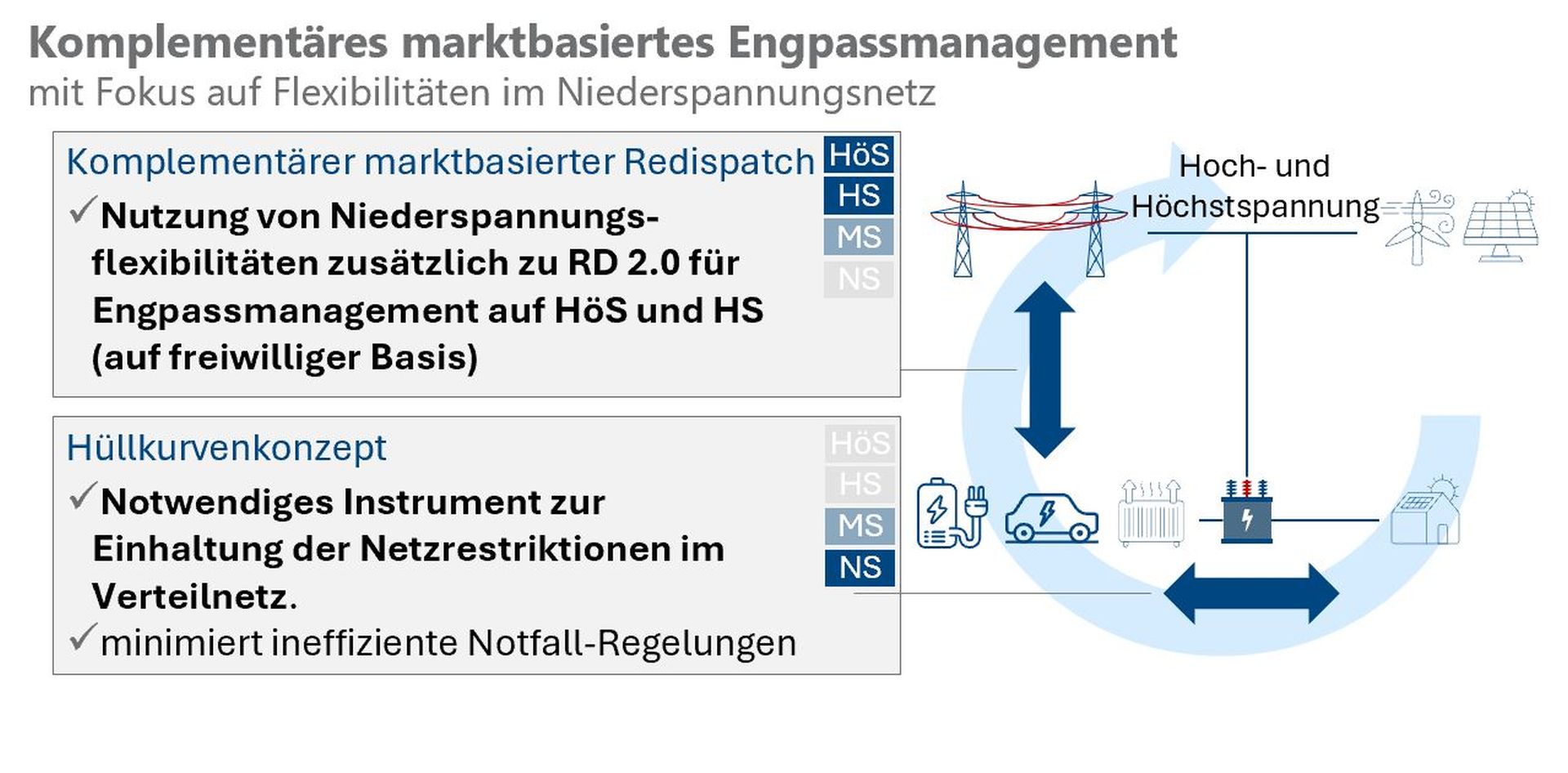Yesterday E-Bridge, in the person of Gerald Blumberg, was able to take part in the “Grid Flexibility” workshop organized by TenneT TSO GmbH and TransnetBW GmbH, which was moderated by the German Energy Agency (dena). Many thanks to all participants for the productive exchange.
The focus was on the future integration of “low-voltage flexibilities” such as electric cars, heat pumps and home storage systems into congestion management. Together with transmission and distribution grid operators as well as important market participants such as Tesla, Viessmann and many other experts from science and regulation, the instruments of “complementary market-based redispatch” and the “envelope curve concept” were discussed intensively (see study – only German language: https://lnkd.in/e3VdS6Ac).
The key findings
- There is a consensus that the instruments are compatible with other instruments (such as §14a, RD 2.0, any bidding zone split, …).
- There is still a significant lack of clarity on the subject of “dynamic” grid charges. In addition, it does not appear to be feasible in practice at the lower voltage levels in the foreseeable future.
- There are still many challenges in implementing the instruments. However, many of them exist “anyway” (SMGW rollout, further development of RD 2.0, …).
- The market is interested in complementary market-based redispatch and the envelope curve approach, but would like to see a much faster pace.
- Only the market-based approach can leverage the potential in low voltage. The inc-dec gaming discussion is important, but the current discussion on cost determination for storage facilities shows that there are also problems with cost-based redispatch. If the compensation is too high, there are inc-dec incentives there too. If it is too low, there is also a disincentive for storage. The opportunities should be considered here and the discussion should take into account fairly that no instrument has only strengths.
- In view of the potential of the instruments, it is now necessary to gather practical experience with appropriate scaling (e.g. several 1,000 electric cars or heat pumps in a region, with a correspondingly small number of MW without any risk to system security). The above-mentioned study has laid the foundations for this. However, the industry requires financing in the low seven-figure range. This investment is very small in relation to the opportunity, so a bold approach should be taken and testing should be made possible through regulation.
You can find the key results below (only German language). You can find the complete study here (only German language): https://lnkd.in/e3VdS6Ac


